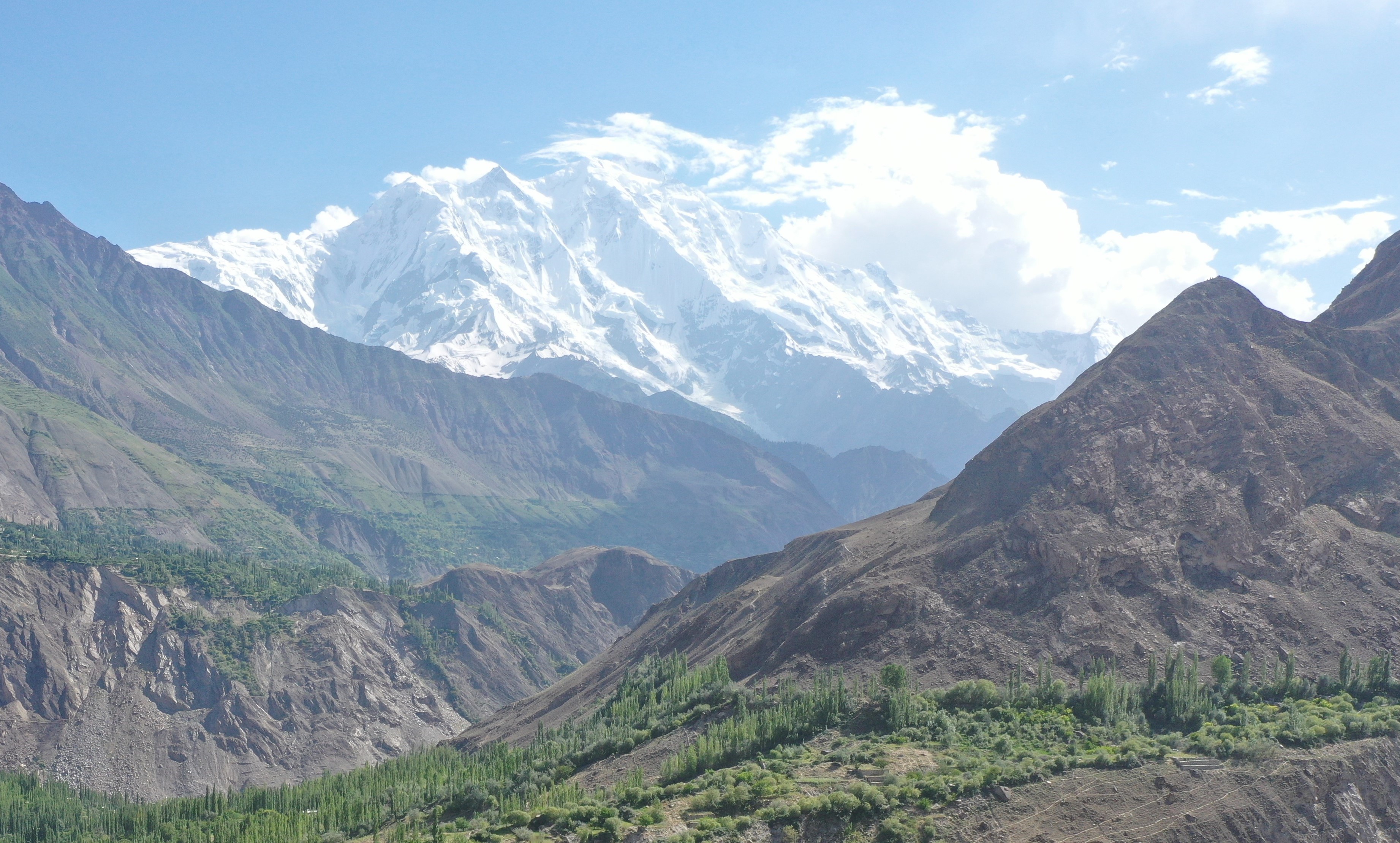Ice dammed lake outburst floods are a predominant and frequent occurrence in the Karakoram region. In a landmark study, scholars from the UK, China, and Pakistan catalog all GLOF events in the Karakoram-Hindukush region between 1533 and 2020 and identify an increasing trend in GLOF events as a response to global climate change; they also suggest the implementation of mitigative measures in these regions to ensure the safety of local inhabitants.
The effects of global climate change on glaciers are generally difficult to predict, given the long period between climate change and the response of the glacier. However, recent studies have pointed out that glacier thinning has increased in the 21st century. While this is the expected response, certain regions—notably the Karakoram, Pamir, and West Kunlun glaciers—have been spectacular exceptions, being relatively stable and even gaining mass! Accordingly, scholars refer to this phenomenon as the “Karakoram Anomaly.”
While most glaciers around the world are melting as a result of global warming, the Karakoram glaciers have been stable. Instead, it has responded to global warming with an increased number of glacial flood events.
Image credit: Peng Cui, Chinese Academy of Sciences
The Karakoram glaciers represent some of the most glaciated regions outside the Polar Regions. In response to climate change, the glaciers have been observed to have thickened, and exhibit irregular, frequent, and sudden advances called “surges,” which lead to an increasing threat of ice dam lake formation and subsequent outburst flooding throughout the region.
“GLOFs are among the predominant natural hazards in the Karakoram region. However, there is very little study related to ice dam formation and failures that lead to GLOFs,” says Prof. Peng Cui from Chinese Academy of Sciences (CAS), China, who studies natural disasters. The reason is conspicuous: most of these glaciers and lakes are in hostile and remote environments, which makes the collection of field data exceedingly challenging.

Fortunately, the situation is not entirely hopeless. Technologies such as remote sensing and cross-correlation feature tracking have been utilized recently to extract information on inaccessible glacier regions in the Karakoram-Hindukush region. Now, in a new study published in
Earth-Science Reviews, geographers and glaciologists from the UK, China, and Pakistan, led by Nazir Ahmed Bazai from CAS and Prof. Cui, have performed the first comprehensive study of surge glaciers, the generation of ice dam lakes and the frequency of occurrence of GLOFs in the Karakoram-Hindukush region, using a combination of remote sensing techniques, automated feature tracking, historical records and field investigations.
The team first compiled historical records of GLOFs that had occurred between 1533 and 2020 and documented a total of 179 such events in five major valleys. Out of these 179 GLOFs, the team found two increased GLOF events between the periods 1890-1930 and 1990-2019, with a period of diminished activity between 1940 and 1970. In fact, sixty-four of these events were recorded after 1970. The team identified two glaciers, Kaygar and Khurdopin, as the most disastrous, causing 31% of major GLOFs.
The team further analyzed ten surge glaciers between 1990 and 2019 by applying cross-correlation feature tracking on remote-sensed imagery and identified a periodic surge cycle of approximately (15-20) years for Shishper, Khurdopin, Kyager and Chiliji glaciers, with a higher surge velocity in the mid-2010s relative to that in the late 1990s for all the glaciers.
“A reasonable premise is that the glacier surges, and thus glacier lake formation and GLOF generation, are closely connected with climate over time-periods comprising multiple decades,” observed Prof. Cui.
The geologists conclude that the Karakoram glaciers have responded to global warming with an increase in the glacier surge and GLOF events, and these are likely to become more frequent in the future. What triggers GLOF, however, remains a challenge to identify. Nevertheless, Prof. Cui is optimistic. “Our findings have greatly enhanced our understanding of GLOFs and the proposed GLOF triggering conceptual model. It shows us that continuous monitoring and prediction of future GLOFs, together with an implementation of alleviative measures in mountain regions, is of great importance for future safety,” he concludes.
Peng Cui is a professor at the Institute of Mountain Hazards and Environment at Chinese Academy of Sciences (CAS), China. He was a research assistant at the Chengdu Institute of Geography, CAS from 1985 to 1987 and obtained his PhD degree in physical geography. His research topics include natural disasters (debris flow and landslide), erosion and sediment yield, and fluvial geomorphology. He has received several awards and fellowships related to his work, has published more than 170 papers and 2 monographs, and has taken charge of more than 20 national and international cooperation projects.
Editor's note: the study was supported by STEP, a TPE related science project.









